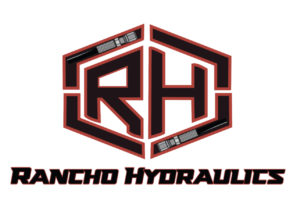Hydraulic hoses are sensitive to environmental conditions, especially when temperatures swing to extremes or seasons change. Temperature stands out as a critical factor affecting their performance and lifespan. To ensure your hydraulic systems run efficiently and safely for the long term, it’s crucial to grasp how temperature impacts hoses and their contents. Here are some key considerations and solutions:
Material Expansion and Contraction Due to Temperatures
All materials expand or contract with temperature variations, and the material type plays a significant role in how well the hose copes with these changes. Exposure to temperatures beyond its design limits can result in a range of problems, including fluid pressure issues, broken seals, burst hoses, leaks, and system failures. To prevent such issues, ensure that the hydraulic hoses in your system are suitable for the high and low-temperature ranges they will encounter, as advised by the hose manufacturer or your supplier.
Reduced Flexibility in Winter Conditions
In extremely cold temperatures, hydraulic hoses can lose flexibility and become brittle as they freeze and thaw. This loss of flexibility increases the risk of cracking, broken seals, and compromised attachments. To minimize these risks, consider using protective sleeves, weather-appropriate barriers, storing extra hoses in climate-controlled areas away from direct exposure to sun and weather elements, and adhering to the manufacturer’s recommendations for installation and maintenance.
Changes in Fluid Viscosity Under Extreme Temperatures
Hydraulic fluid requires a specific viscosity to function effectively. Extreme temperatures can cause the fluid to either thin or thicken beyond its intended viscosity range. This can lead to reduced system efficiency, increased strain on hoses and seals, inadequate lubrication of critical components, and potential damage to the entire system. When faced with extreme temperatures, consider using additives to maintain the fluid’s ideal viscosity and avoid routing hoses through areas prone to extreme heat or cold.
To ensure the longevity and efficiency of your hydraulic systems, it’s vital to understand how temperatures affect hydraulic hoses. Selecting the right hose for the expected temperature range, conducting regular inspections, and implementing proper maintenance practices can help mitigate potential issues. If uncertain, seek advice from the manufacturer or your supplier for the best recommendations.
Rancho Hydraulics Handle Your Hydraulic Hose Inventory
At Rancho Hydraulics we understand the importance of having the right parts on hand when you need them. Our inventory management service experts ensure that parts are always stocked, organized, and easily accessible. Contact us today to learn how we can tailor an inventory management system to your needs, allowing you to focus on other aspects of your business.
